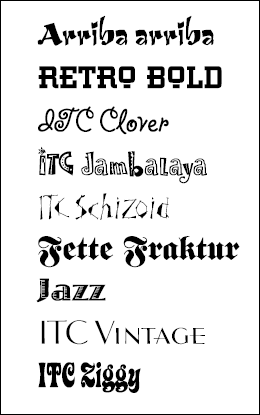Chapter 4. SELECTING THE RIGHT TYPE FOR THE JOB
Type has the power to make or break a job. Every typeface has a distinct personality and the ability to convey different feelings and moods, some more than others. Display typefaces, also known as headline typefaces, tend to be stronger in personality, sometimes trading legibility at smaller sizes for a more powerful feeling. They can evoke strength, elegance, agitation, silliness, friendliness, scariness, and other moods. Text designs, often used for blocks of copy, are more subtle in mood and emphasize legibility. Their personalities tend to be whispered rather than shouted.
Although typeface selection is a very personal and subjective decision, there are some guidelines and unofficial rules that will help you narrow your search and ultimately help you make the right choice.

Every typeface has its own personality and ability to convey different moods and feelings, some more than others. Display typefaces tend to be stronger in personality, sometimes trading legibility at smaller sizes for a more powerful feeling.
DESIGN GOALS
The first and foremost step in selecting a typeface is knowing your goals. As a designer, your primary responsibility is to serve the client using your design and problem-solving skills. It is not to make their job into your own personal award-winning design statement. Personal self-expression to the exclusion of ...
Get Type Rules!: The Designer's Guide to Professional Typography, Third Edition now with the O’Reilly learning platform.
O’Reilly members experience books, live events, courses curated by job role, and more from O’Reilly and nearly 200 top publishers.

